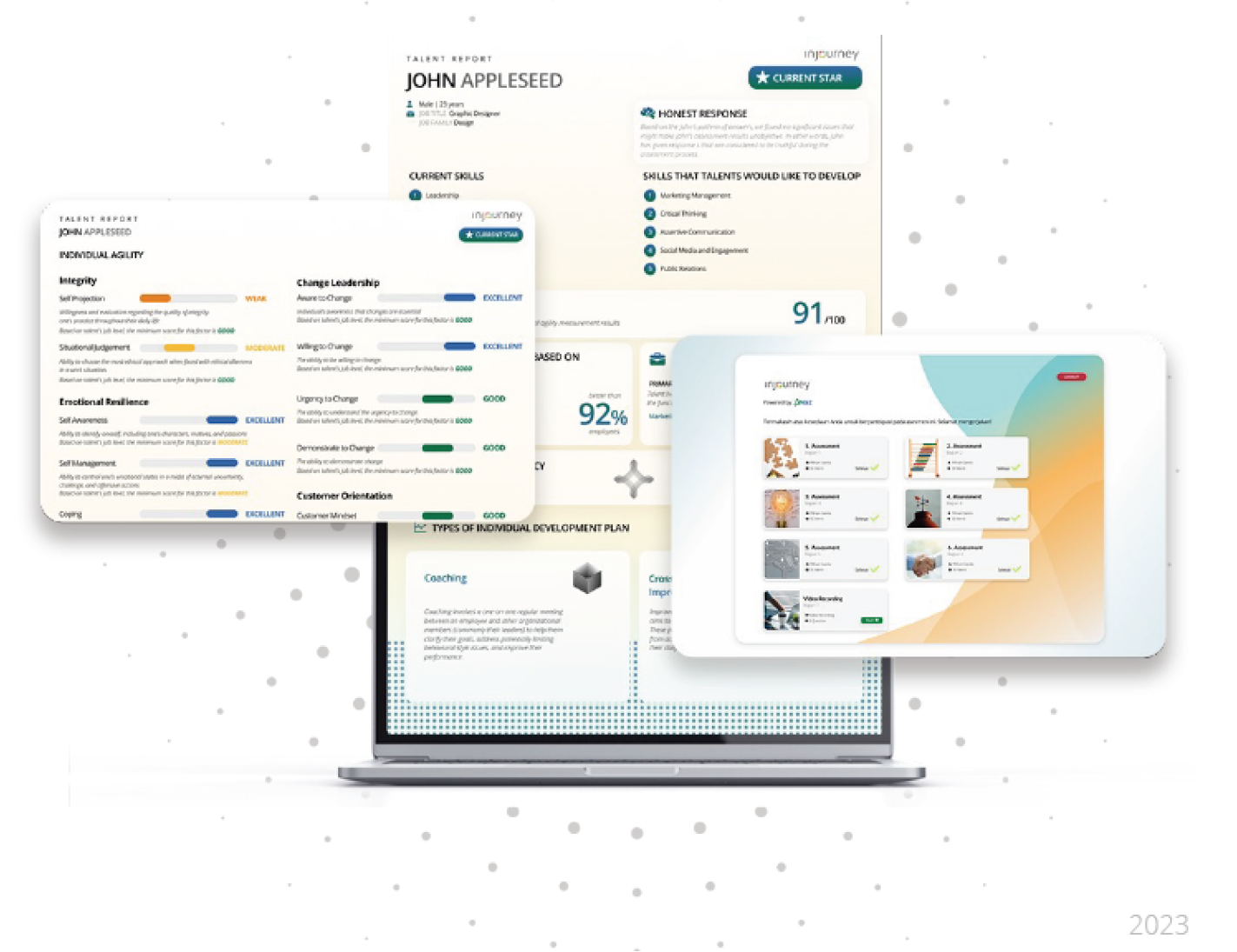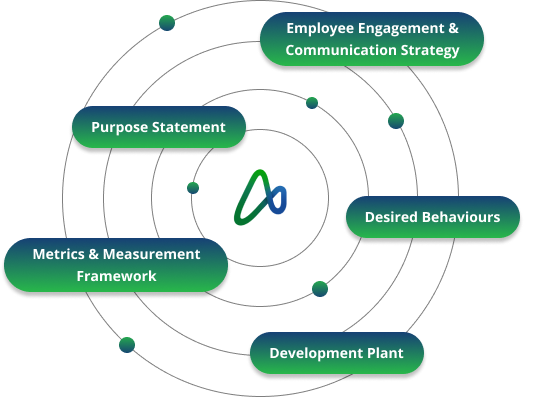Defining Purpose
We begin our journey by first identifying organization's purpose. This
foundational step guides the entire process, ensuring that employer and corporate brand is
authentic, impactful, and resonates with all stakeholders. Our suite of purpose services
facilitates this critical discovery, helping you to uncover company's core
DNA and develop an Employer Value Proposition that speaks to everyone across holding
members.

Assessment
We conduct an initial assessment that aim to
understand the talent profiles within
Company better. evaluating its core values,
mission, and organizational DNA.
How we do it?
- In-Depth Interview with Founders, Key Leaders of Organization to Operational Level Members
- FGD or In-Depth Interview with representative of 3 Tiers of Employees
- Assessment and Survey to 3 Tiers of Employees, based on their internalization, achievement, and years of employment in the company.

Assessment
We conduct an initial assessment that aim to
understand the talent profiles within
Company better. evaluating its core values,
mission, and organizational DNA.
How we do it?
- In-Depth Interview with Founders, Key Leaders of Organization to Operational Level Members
- FGD or In-Depth Interview with representative of 3 Tiers of Employees
- Assessment and Survey to 3 Tiers of Employees, based on their internalization, achievement, and years of employment in the company.


Interpretation
Purpose Interpretation is the second step in
defining Company's Employer and Corporate
Brand. It involves analyzing the data gathered during the Purpose
Assessment
and deriving meaningful insights to articulate a clear and nuanced
understanding of Company's purpose. This interpretation will inform the
development of an authentic and compelling Employer Value Proposition
that
resonates with potential and existing employees.
How we interpret upon the knowledge
gathered ?
The interpretation process will involve:
- Thematic and correlation analysis, for identifying key themes and patterns that emerge from the data, including core values, aspirations and motivations.
- Combining identified themes to create an understanding of Company’s purpose.
- Validation check by crafting a concise statement of Company’s purpose that resonates with across stakeholders

How we interpret upon
the knowledge
gathered ?
A comprehensive document outlining the
key findings of the Assessment process,
including the identified themes, synthesized
understanding of Company's purpose, and
its connection to measurable values.
Regenerative Strategy Development
Assist SOEs in formulating
long-term strategies
that
align with regenerative
principles, emphasizing sustainability, innovation, and societal impact.
Stakeholder Engagement Programs
Facilitate constructive dialogues
between SOEs
and diverse stakeholders, including government bodies and local
communities, to
build stronger partnerships.
Governance Enhancement
Advise on transparent and
accountable governance
practices to gain public trust and ensure alignment with regenerative
goals.
Sustainability Reporting
Assist in measuring and reporting
the social and
environmental impact of SOEs to meet global sustainability reporting
standards.
Innovation Ecosystems
Foster innovation within SOEs by
establishing
ecosystems that encourage collaboration with startups and research
institutions.

Embodiment
Purpose Embodiment is the process of translating
the interpreted
purpose of company into tangible and actionable elements that
can be embedded in the organization's culture and operations.
This involves translating the abstract purpose into concrete
behaviors, practices, and experiences that employees encounter
every day. More importantly, it’s bringing purposes to life.
How we translate into tangible and
actionable elements?
The embodiment process will involve:
- Developing behavioral guidelines, establishing clear guidelines for how employees can embody the purpose in the daily work.
- Cultivating desired behaviors by incorporating the purpose into everyday practices.
- Embedding purpose across systems and processes, integrating the purpose into existing systems and processes, such as performance management, reward systems and decision making frameworks.


Embodiment Plan
A comprehensive plan outlining the specific actions,
initiatives, and resources needed to translate the
interpreted purpose into tangible and actionable
elements.